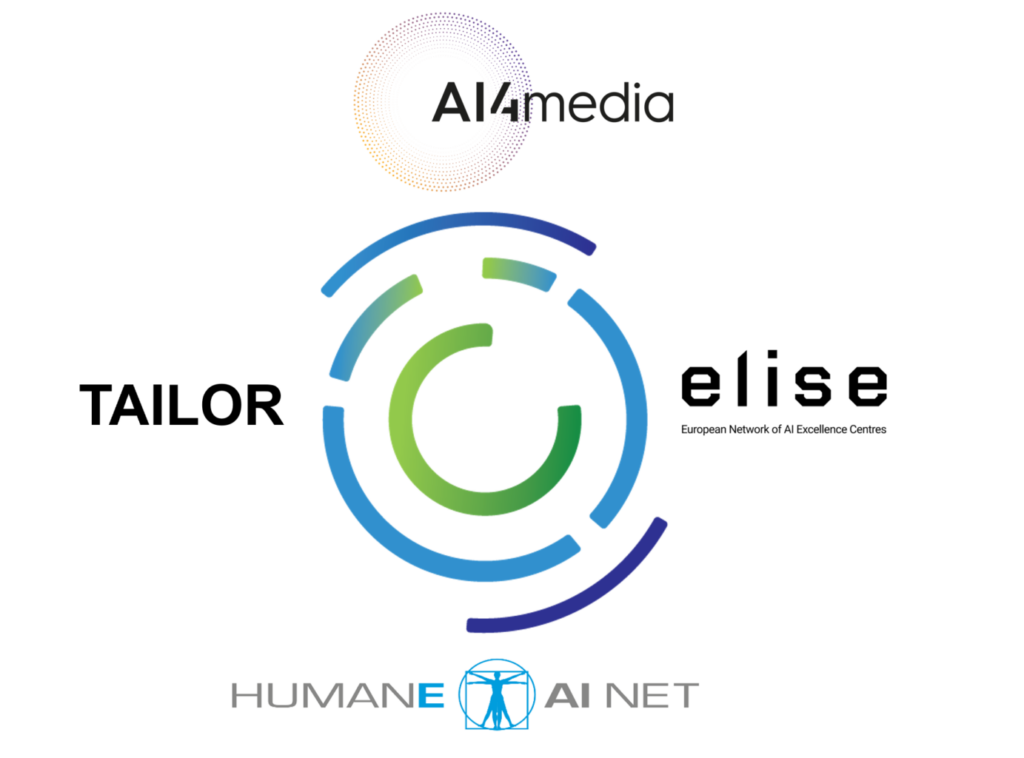About TAILOR

Integrated learning, optimization, and reasoning
Integrated learning, optimization, and reasoning: a definition
Integrated learning, optimization, and reasoning are crucial components in the development of Trustworthy AI. What are those elements, and why is their integration necessary?
Learning: Learning is the ability of AI systems to learn from data. Machine learning, especially deep learning, has shown remarkable success in various applications by identifying patterns and making predictions based on large datasets. However, purely data-driven approaches fail to capture causal relationships and provide generalisation beyond what is already in the data collected about the past.
Optimization: Optimization techniques are used to improve the performance of AI systems by finding the best parameters or configurations. This ensures that the AI system operates efficiently and effectively. However, optimization alone cannot guarantee that the system will always make the right decisions, especially in complex and dynamic environments.
Reasoning: Reasoning involves the ability of AI systems to make logical inferences based on knowledge and rules. This is essential for tasks that require understanding and applying domain-specific knowledge, such as answering questions about traffic rules or solving puzzles. Purely knowledge-driven approaches, however, can be impractical as they require encoding a complete and consistent knowledge base.
The integration of these three components is necessary to achieve trustworthy AI for several reasons:
Data Efficiency: By combining learning and reasoning, AI systems can use existing knowledge to speed up the learning process and reduce the amount of data needed. For example, in the context of self-driving cars, knowing the rules of traffic can help the system learn more efficiently and ensure that the learned model respects these rules.
Robustness: Integrated approaches can provide guarantees and improve the robustness of AI systems. Purely data-driven approaches may lead to incorrect results in edge cases, while integrated approaches can use knowledge to provide more reliable and accurate outcomes.
Trustworthiness: Trustworthy AI requires systems that are transparent, explainable, and reliable, preferably with formal guarantees. Integrated learning, optimization, and reasoning approaches can help achieve this by combining the strengths of each component. For instance, neurosymbolic AI, which combines neural networks with symbolic reasoning, can leverage both data and knowledge to make more informed and trustworthy decisions.
In summary, the integration of learning, optimization, and reasoning is essential to create AI systems that are not only efficient and effective but also trustworthy and reliable. This integrated approach is critical to realise AI systems that can handle complex tasks, make accurate decisions, and provide explanations for their actions, thereby gaining trust of users and stakeholders.
POWERFUL INSTRUMENTS FOR AI RESEARCH AND COLLABORATION

A strategic roadmap for research and innovation

A research program to address grand challenges

A connectivity fund for active dissemination and inclusion of the broader research community

Network collaboration activities
5 RESEARCH AREAS
TRUSTWORTHY AI
– to develop the foundations for trustworthy AI
PARADIGMS AND REPRESENTATIONS
– to combine and integrate learning, reasoning and optimization
ACTING
– learning and reasoning to plan, act and monitor behavior
SOCIAL AI
– learning and reasoning for multi-agent interactions and human AI collaboration
AUTO AI
– to automate the development and deployment of AI systems and democratize the access to state-of-the-art technology
A STRONG SET OF EUROPEAN AI PROJECTS

TAILOR was one of four “Network of Excellence” (TAILOR, ELISE, HUMANE AI NET and AI4MEDIA) working on aspects of trustworthy AI funded under the H2020-ICT-48-2020 call. The Coordination and support action VISION4AI brought the four together.
BACKGROUND & RATIONALE
The purpose of the EU Project TAILOR is to build the capacity to provide the scientific foundations for Trustworthy AI in Europe by developing a network of research excellence centres leveraging and combining learning, optimisation, and reasoning. These systems are meant to provide descriptive, predictive, and prescriptive systems integrating data-driven and knowledge-based approaches.
Artificial Intelligence (AI) has grown in the last ten years at an unprecedented pace. It has been applied to many industrial and service sectors, becoming ubiquitous in our everyday life. More and more often, AI systems are used to suggest decisions to human experts, to propose actions, and to provide predictions. Because these systems might influence our life and have a significant impact on the way we decide, they need to be trustworthy. How can a radiologist trust an AI system analysing medical images? How can a financial broker trust an AI system providing stock price predictions? How can a passenger trust a self-driving car?
These are fundamental questions that require deep analysis and fundamental research activity as well as a new generation of AI talents who are skilled in the scientific foundations of Trustworthy AI, who know how to assess, and how to design, trustworthy AI systems. Some of the current issues related to lack of trust in AI systems are a direct consequence of the massive use of black-box methods relying only on data. We need to define the foundations of a new generation of AI systems not only relying on data-driven approaches, but also on the whole set of AI techniques, including symbolic AI methods, optimization, reasoning, and planning.
OBJECTIVES

PROJECT DATA
| Project acronym | TAILOR |
| Project full name | Foundations of Trustworthy AI – Integrating Reasoning, Learning and Optimization |
| EC Grant Agreement number | 952215 |
| Project starting date | 01/09/2020 (September 1, 2020) |
| Duration | 48 months |
| Day for finalization | 31/8/2024 (August 31, 2024) |
| Call identifier | H2020-ICT-2019-3 |
| Topic | ICT-48-2020 Towards a vibrant European network of AI excellence centres |
| Maximum grant amount | € 12 M |
| Number of partners | 54 |
| Coordinator | Linköping University, IDA, SE-581 83 Linköping, Sweden |
| Project Coordinator | Fredrik Heintz fredrik.heintz@liu.se +46 70 089 56 89 |
| Project Manager | Trine Platou trine.platou@liu.se +46 79 062 16 39 |
| Coordinator Financial Officer | Kirstin Kahl kirstin.kahl@liu.se +46 13 28 28 97 |